Do you ever get frustrated when trying to rinse a dish or fill a pot with water and the pressure is so weak it barely trickles out? You’re not alone. A low water pressure issue in the kitchen is one of the most common plumbing problems homeowners experience. In this comprehensive guide, we’ll answer some of the most common questions about what can cause low water pressure in the kitchen sink, as well as provide tips on how to troubleshoot and fix the problem.
Why Low Water Pressure in Kitchen Sink is an Issue
Kitchen sink is probably the most important plumbing fixture in your house. It is used multiple times a day for various purposes such as cooking, washing dishes, and even cleaning vegetables.
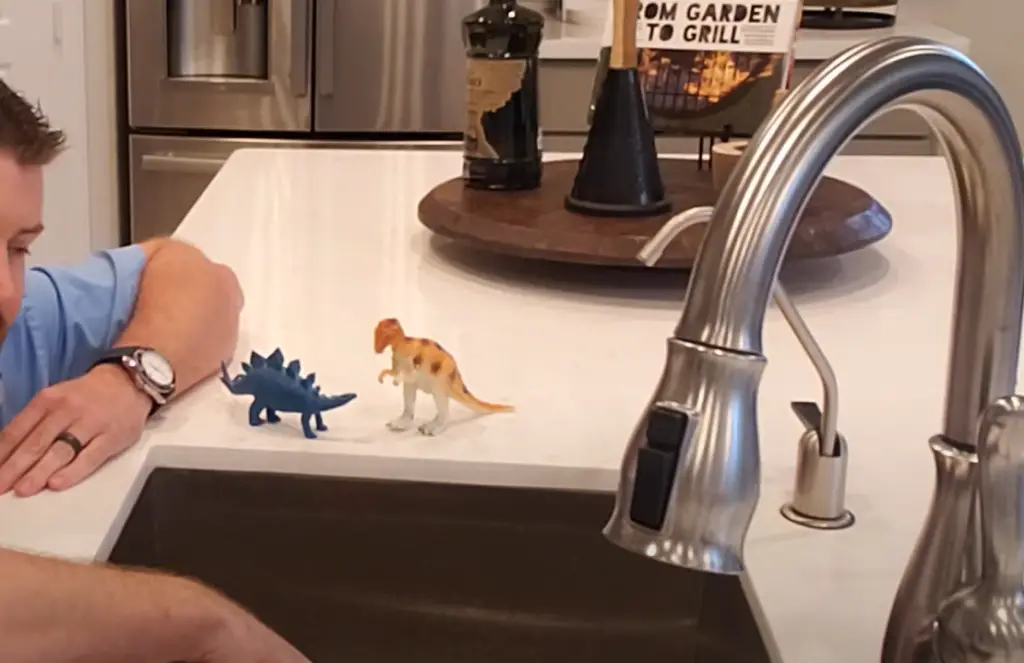
If you’ve ever experienced low water pressure in your kitchen sink, then you know how frustrating it can be. Not being able to get a strong stream of water when you’re trying to wash dishes or cook can be a real pain.
To prevent low water pressure in your kitchen sink, you should soak the faucets in your kitchen with a white vinegar and water mixture every few months. This will help to remove any build-up that might be causing the problem.
If you have hard water, it’s also a good idea to install a water softener. This will help to reduce the amount of minerals in your water, which can lead to low water pressure.
There are a few different things that could be causing your low water pressure, and today we’re going to help you figure out what’s going on. Below we’ll go over some of the most common causes of low water pressure in kitchen sinks in detail and offer some tips on how to fix the problem. [1]
Main Causes of Low Water Pressure in Kitchen Sink
Breaks in the main water line
Before we begin exploring the main causes, it’s important to understand that you can divide a low water pressure by two types: primary and secondary.
Primary low water pressure means that your entire house is affected by low water pressure.
Secondary low water pressure only affects one or more fixtures in your home. So, if you have low water pressure in your kitchen sink, but not in your bathroom sink or shower, then you have a secondary case of low water pressure.
This means, to diagnose the exact problem, you should check the water pressure in all fixtures in your home.
If all of the faucets in your home are having low water pressure, then the problem is likely with your main water line. There are a few things that can cause your main water line to break, including:
- Age: over time, your main water line can become corroded or develop leaks;
- Tree roots: if there are trees close to your main water line, their roots can grow into the pipe and cause it to break;
- Ground movement: shifting or settling ground can put stress on your main water line and cause it to break;
It’s also possible that there’s a problem with your municipal water supply. This is beyond your control, but you can call your city’s public works department to inquire about any issues in your area. They may be able to give you more information about what’s causing the problem and when it will be fixed. [2] ,[3] ,[7]
Clogged aerator
Aerator is a small screen that is attached to the end of your kitchen sink faucet. It’s purpose is to mix air with water as it comes out of the faucet, which gives you a stronger stream and also limits splashing. Over time, your aerator can become clogged with mineral deposits and other debris, which will decrease water pressure.
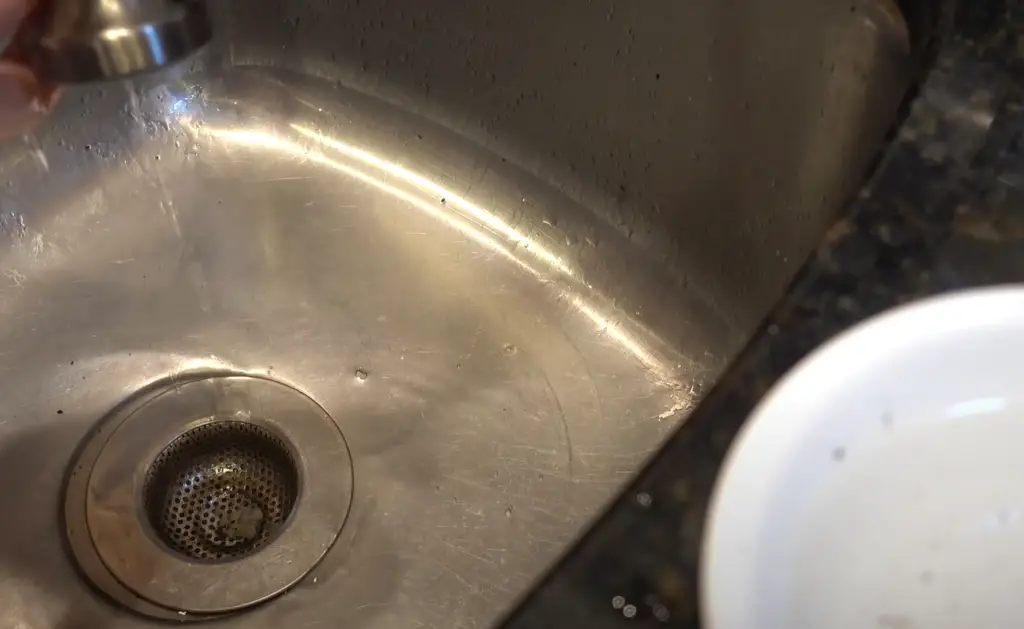
You can usually tell if your aerator is clogged if you notice that your water pressure is low when you turn on the faucet, but it improves when you remove the aerator and let the water run directly from the spout.
Clogged faucet cartridge
Faucet cartridge is one of the most common causes of low water pressure in kitchen sink. Normally a cartridge regulates the flow of water, but over time, your faucet’s cartridge can become clogged with sediment and other debris, which can restrict water flow and cause low water pressure.
To test whether the cartridge could be an issue, twist the handle and see if the water pressure improves. If it does, then you’ll know that the cartridge is likely to blame. [1] ,[2] ,[4]
Leaking toilet
A leaking toilet can waste a lot of water, and it can also be the cause of low water pressure in your home. If you have a leaky toilet, it’s important to have it repaired as soon as possible. [5]
Issues with shut-off valve
A shut-off valve is a device that also helps to regulate the flow of water in your home. It is usually located below your sink.
Another possibility is that the shut-off valve is old and needs to be replaced. If you have an old home, this is a more likely scenario. The good news is that replacing a shut-off valve is a relatively easy DIY project.
There are two main types of shut-off valves: ball valves and gate valves. Ball valves are the most common type of shut-off valve. They are simple to use and require little maintenance. Gate valves, on the other hand, are more complex and require more regular maintenance.
Damaged Pressure Reducing Valve
Pressure Reducing Valve is usually located on the main water supply line to your home. It’s purpose is to reduce the water pressure coming into your home, which can help prevent damage to your plumbing system. However, if this valve becomes damaged, it can cause low water pressure in your kitchen sink. [4]
Leaks and clogs in pipes
One of the most common causes of low water pressure in both homes and businesses is leaks in pipes or fixtures. While a small drip might not seem like much, it can actually add up to hundreds of gallons of water wasted each year. In addition, leaks can erode the surrounding material, which can eventually lead to larger problems such as burst pipes.
Another common cause of low water pressure is sediment buildup in your pipes. Over time, minerals from hard water can build up on the inside of your pipes, restricting the flow of water and causing low pressure. This is especially common if you have an older home with cast iron pipes. If you think that sediment might be the problem, you can try using a plunger or a plumbers’ snake to clear the obstruction. You can also have your pipes professionally cleaned, which will remove any buildup and restore full water flow.

Leaks are usually rather easy to indicate, simply inspect the area near your sink for any pooled water that may have collected. Clogs might not be as evident, but if your kitchen sink has been draining slowly or if there is any water backing up into the basin, then it’s likely that there is a clog somewhere in the pipes. [2], [4]
Issues with water heater
If your cold water pressure is fine but your hot water pressure is low, then it’s likely that you have an issue with your water heater. This is a fairly common problem, and there are a few different things that could be causing it.
If your water heater is electric, then the first thing you should check is the breaker. If the breaker has tripped, then simply resetting it should fix the problem.
Another possibility is that there is sediment build up in your water heater. Over time, the sediment can settle at the bottom of your tank and cause problems. Heaters should be flushed semi-annually to prevent this from happening. If you’re having trouble doing it yourself, then you may need to call a professional.
Finally, it’s possible that your heating element has gone bad and needs to be replaced. This is a more serious problem, but it can be fixed by a professional. [1] ,[3]
How Do You Troubleshoot Low Water Pressure?
Now that you know some of the most common causes of low water pressure, you’re probably wondering how you can troubleshoot the problem. Below we will go over each potential issue and provide some tips on how to fix it.
Fixing blocked water pipes
Sometimes the issue may require a quick fix, like unclogging a blocked water pipe.
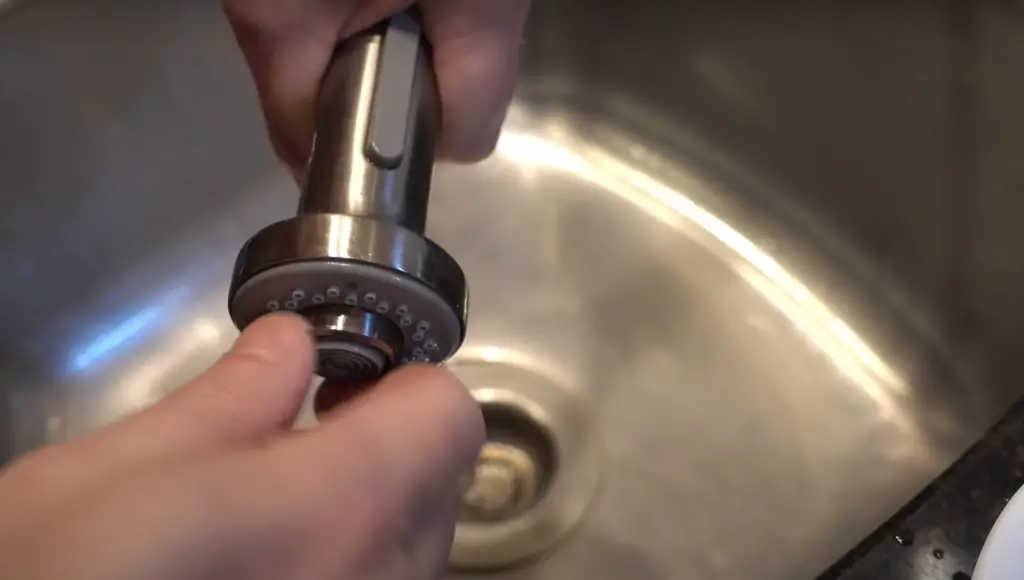
This is actually easier than it sounds.
Run off the water
First thing you should do is to turn off the supply valves under the sink. After the water is off, turn on all the faucets in your home to release any residual water pressure.
Separate supply lines from the faucet head
Next, you will need to remove the faucet head so that you can access the supply lines. Once the supply lines are exposed, use a wrench to unscrew them from the faucet. Unscrew the hot water line first, and then repeat the same with the cold water line. As for why, refer to the next step.
Open the valves and release the water
Prepare a bucket to catch any water that may come out and hold a hot water line over it. Turn the faucet slowly at first to release any built-up pressure and wait for a few seconds. Reconnect the hot water line and repeat the same process but with cold water.
Reattach the supply lines
Now you can reattach the supply lines to the faucet. Make sure that they are screwed on tightly so that there is no water leakage. Still, make sure to not over-tighten them as this may damage the threads.
You can now turn on the water supply and check if the issue is fixed. If not, then you may need to call a professional to help you further troubleshoot the problem.[3], [4]
Fixing clogged faucet aerator
If you have very hard water, mineral deposits can easily build up and restrict the flow of water through the aerator. Fortunately, this is an easy problem to fix. It’s important to note that not all kitchen faucets have aerators, so if yours doesn’t, then you can look for other possible causes.
Remove the aerator from the faucet
First, you’ll need to remove the aerator from the faucet. This is usually just a matter of unscrewing it by hand. If it’s stuck, then you can use a wrench or pliers to loosen it.
Check the pressure without the aerator
Once the aerator is removed, turn on the water and see if the pressure has increased. If it has, then you know that the aerator was the cause of your low water pressure. If the pressure is still low, then the problem is bigger than that.
Inspect the aerator for any mineral deposits
Once you’ve determined that the aerator is the problem, you’ll need to clean it. First, inspect it for any mineral deposits. If there are any visible deposits, then you should rinse it with hot water. This will help to dissolve any buildup.
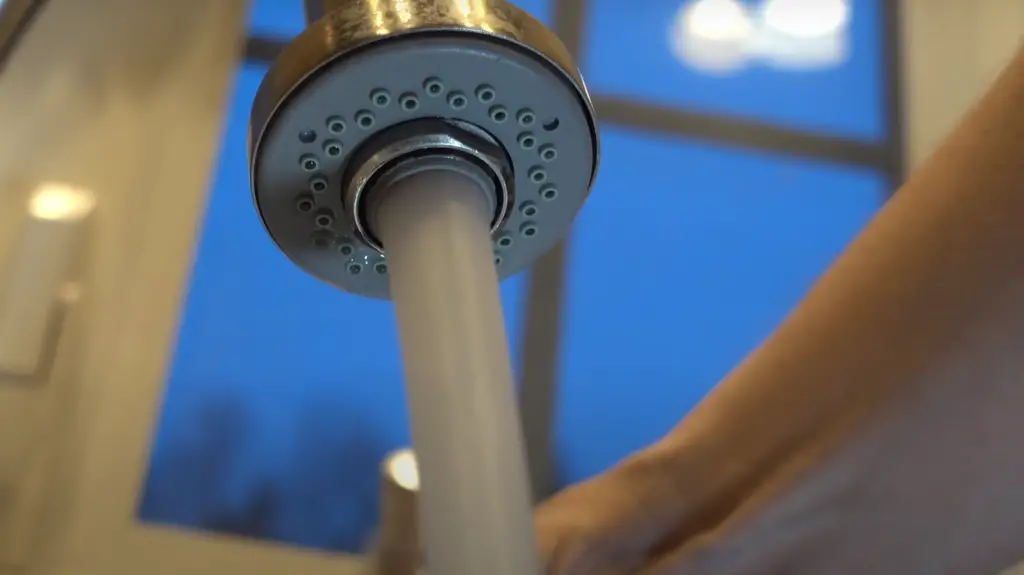
If the aerator is very dirty, then you may need to soak it in the vinegar solution overnight after rinsing it off.
If the deposits are particularly stubborn, then you can use a toothbrush or wire brush to remove them. You can also use a pin to clear any small holes that may be blocked.
Once you’ve cleaned the aerator, reattach it to the faucet and turn on the water. The pressure should now be back to normal. If it’s not, then you may need to replace the aerator. [1], [3], [4]
Fixing clogged faucet cartridge
Sometimes, it’s likely that the problem is with the cartridge. The cartridge has a small hole that allows water to flow through it. Over time, this hole can become clogged with mineral deposits, which leads to restricted water flow.
Turn off the water in your kitchen sink
The first step is to turn off the water in your kitchen sink. You can do this by turning the knob on the supply line under the sink. Once the water is turned off, run the water in the sink until it runs out. This will help to remove any water that is still in the line.
Remove the valve handle
Once the water is turned off, you will need to remove the valve handle, as well as the shut-off handle. To do this, simply unscrew the screw that holds the handle in place. Once the handle is removed, you should be able to see the cartridge.
Remove the cartridge
The next step is to remove the cartridge.
Clean the cartridge with vinegar and water solution
Once the cartridge is removed, you will need to clean it with a vinegar and water solution. Simply mix equal parts of vinegar and water and use it to clean the cartridge. To wash off the residue solution you should rinse it off with water
Once the cartridge is clean, you can replace it and screw the handle back on. Then, turn on the water and check to see if the pressure has improved. If not, you will need to replace the cartridge.
To replace the cartridge, you’ll need to find the right model for your faucet. Once you have the correct model, follow the instructions that come with it. It’s generally a pretty simple process that just involves removing the old cartridge and replacing it with the new one.
Fixing leaks in pipes or fixtures
If you have a leak in your pipes or fixtures, it’s likely that this is the cause of your low water pressure. The first step is to locate the source of the leak. This can be done by taking the readings from a water meter before and after a period of time when you know no water will be used (such as overnight). If the readings are different, there is a leak somewhere.
Unfortunately, there’s not much that you can do by yourself here. You’ll need to call a licensed plumber to come and take a look. They will be able to tell you exactly where the leak is and repair it accordingly.
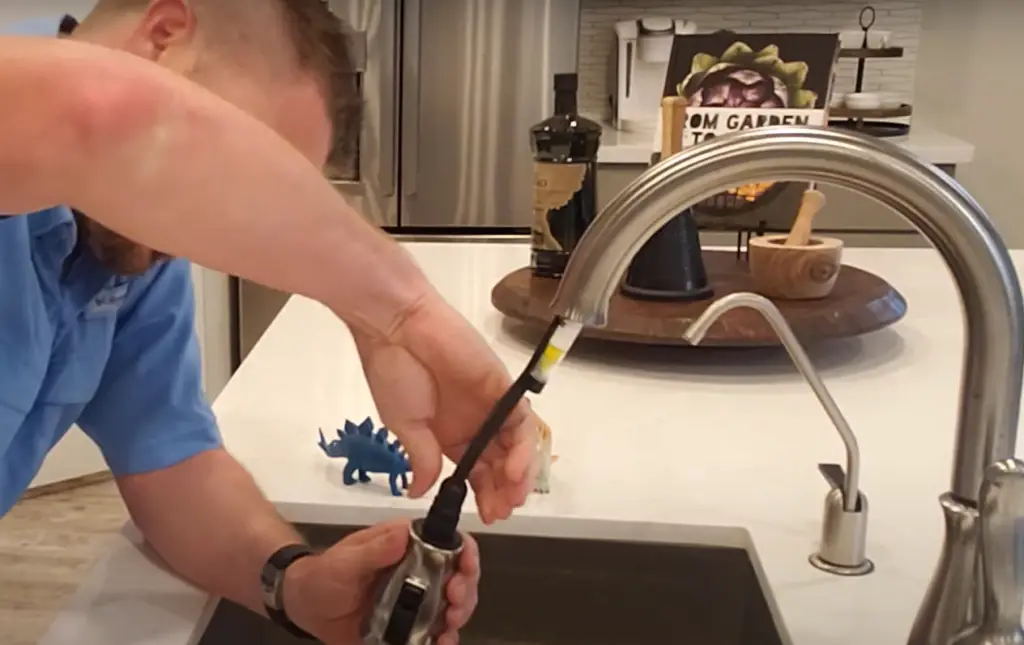
If your home has an older plumbing system, it’s possible that the pipes themselves are too small. This can restrict the amount of water flow and lead to low water pressure. The best way to fix this problem is to have a professional plumber replace the old pipes with new ones that are larger in diameter. [4]
Fixing broken PRV’s
If you have a broken PRV, the first thing you should do is to simply adjust it. In most cases, you can do this by loosening the screw on the top of the valve and turning it counter-clockwise. If this doesn’t work, you’ll need to replace the PRV. [4] ,[5]
Understanding Low Water Pressure in Your Kitchen Sink
Low water pressure in the kitchen sink can be frustrating, but it’s a common issue with various potential causes. Below, we explore the reasons behind low water pressure in your kitchen sink, including plumbing problems, faucet issues, water supply, and DIY solutions, to help you diagnose and resolve this common household concern.
| Cause | Explanation |
|---|---|
| Clogged Aerators | Mineral buildup or debris can clog the faucet aerator, reducing water flow. |
| Leaky Pipes | Leaks in the pipes leading to your kitchen sink can result in decreased water pressure. |
| Corroded Pipes | Corrosion inside old pipes can restrict water flow, causing low pressure. |
| Water Supply Issues | Problems with the municipal water supply, such as maintenance or high demand, can affect pressure. |
| Water Pressure Regulator | A malfunctioning or incorrectly set pressure regulator can lead to low water pressure. |
| Shutoff Valve Position | If the shutoff valve under the sink is partially closed, it can limit water flow. |
| Faucet Problems | Defective or aging faucets may contribute to low water pressure. |
| DIY Solutions | Simple fixes like cleaning the aerator, checking for leaks, or adjusting the pressure regulator can often resolve the issue. |
| Professional Help | For complex plumbing issues or severe pipe damage, consulting a plumber may be necessary. |
Explanation of the Table:
- Clogged Aerators: Explains how mineral buildup or debris can affect the faucet aerator.
- Leaky Pipes: Highlights how pipe leaks can lead to low water pressure.
- Corroded Pipes: Discusses the impact of pipe corrosion on water flow.
- Water Supply Issues: Addresses potential problems with the municipal water supply.
- Water Pressure Regulator: Describes the role of the pressure regulator in water pressure issues.
- Shutoff Valve Position: Explains how the shutoff valve’s position can affect water flow.
- Faucet Problems: Discusses how faucet issues can contribute to low water pressure.
- DIY Solutions: Recommends simple fixes that homeowners can try.
- Professional Help: Advises when to seek assistance from a plumber.
Understanding the potential causes of low water pressure in your kitchen sink is the first step toward resolving the issue and enjoying proper water flow for daily tasks.
FAQ
Why do I have low hot water pressure?
There are a few reasons that your hot water pressure might be low. One reason could be that the water heater is set too low. Another possibility is that there is sediment build-up in the tank, which reduces the amount of hot water available. If you have an electric water heater, another potential issue could be a tripped circuit breaker.
Why do I have no water pressure all of a sudden?
There are a few reasons that might cause your water pressure to drop suddenly. One possibility is that there’s been a problem with the main water line. This could be due to a break in the line, a clog, or damage from weather or construction. If you suspect this is the case, you should contact your local water utility company.
Another possibility is that there’s an issue with your home’s plumbing. This could be anything from a leaky pipe to sediment build-up in your fixtures. If you think this might be the problem, it’s best to call a plumber for help.
Finally, low water pressure can sometimes be caused by simply using too much water at once. This is especially true if you have an older home with smaller pipes. If this is the case, you might need to stagger your water usage or invest in a larger water heater.
Can frozen pipes cause low water pressure?
Frozen pipes can cause your water pressure to drop. When water freezes, it expands and puts pressure on the pipes. This can cause them to burst, which will lead to a loss of water pressure. If you think your pipes may be frozen, you should call a plumber right away.
Where is the aerator located on a kitchen faucet?
The aerator is located on the end of the faucet spout.
If you are having low water pressure in your kitchen sink, one of the first things you should check is the aerator. Over time, sediment can build up on the aerator and restrict water flow. Simply unscrewing it and cleaning it with white vinegar can often improve water pressure.
Could a faulty faucet cartridge be the cause of low water pressure in my kitchen sink?
Yes, a faulty or damaged faucet cartridge can contribute to low water pressure in your kitchen sink. The cartridge is a key component in regulating the flow of water. If it’s worn out, clogged, or malfunctioning, it can restrict water flow, leading to reduced pressure. Replacing the cartridge is often the solution to this issue.
Is a blocked supply line a possible reason for low water pressure in the kitchen sink?
Yes, a blocked or obstructed supply line is a common cause of low water pressure in the kitchen sink. Sediment, debris, or mineral deposits can accumulate in the supply lines over time, restricting the flow of water. Flushing or cleaning the supply lines can help restore proper water pressure.
Can a malfunctioning pressure reducing valve (PRV) affect water pressure in the kitchen sink?
Yes, a malfunctioning pressure reducing valve (PRV) can impact water pressure throughout your home, including the kitchen sink. If the PRV is not functioning correctly, it may regulate the water pressure too low, resulting in reduced pressure at the kitchen sink. A plumber can inspect and adjust the PRV if needed.
Could a water heater issue be the reason for low hot water pressure in the kitchen sink?
Yes, water heater problems can lead to low hot water pressure in the kitchen sink. Sediment buildup in the water heater tank or a failing heating element can affect the production and distribution of hot water, resulting in reduced pressure. Regular maintenance and servicing of the water heater can help prevent this issue.
Can pipe corrosion or deterioration cause low water pressure in the kitchen sink?
Yes, pipe corrosion or deterioration can contribute to low water pressure in the kitchen sink. Over time, pipes can corrode or develop leaks, reducing the flow of water to the faucet. Replacing old or damaged pipes may be necessary to restore proper water pressure.
What should I do if I’ve tried common solutions but still have low water pressure in my kitchen sink?
If common solutions like cleaning the aerator, checking for supply line blockages, and inspecting the faucet cartridge do not resolve the issue of low water pressure in your kitchen sink, it’s advisable to consult a professional plumber. A plumber can perform a comprehensive assessment of your plumbing system to identify and address any underlying problems causing the low water pressure.
Useful Video: How to fix a sink with low water pressure (kitchen or bathroom Faucet) Hot and Cold
Conclusion
If your kitchen sink has low water pressure, it can be a real nuisance. But before you call the plumber, there are a few things you can try yourself. Hard water is more likely to cause this problem, so if you have hard water, be especially vigilant in keeping an eye on your sink’s pressure. You can clean the aerator and cartridge on your faucet, or you can try to unclog the pipes. If nothing helps, call the professional to identify the problem. As you can see, low water pressure can be caused by many different factors – hopefully one of these tips will help get your sink running smoothly again!
References:
- https://www.abchomeandcommercial.com/blog/low-water-pressure-in-kitchen-sink/
- https://www.estesair.com/blog/how-to-fix-low-water-pressure-in-kitchen
- https://southendplumbingllc.com/i-have-good-water-pressure-except-for-the-kitchen-sink/
- https://kitcheninfinity.com/low-water-pressure-in-kitchen-sink/
- https://www.faucetboss.com/low-water-pressure-in-kitchen-sink/
- https://tameson.com/gate-valve-vs-ball-valve.html
- https://www.drainkingplumbers.ca/blog/how-tree-roots-could-be-impacting-your-plumbing/





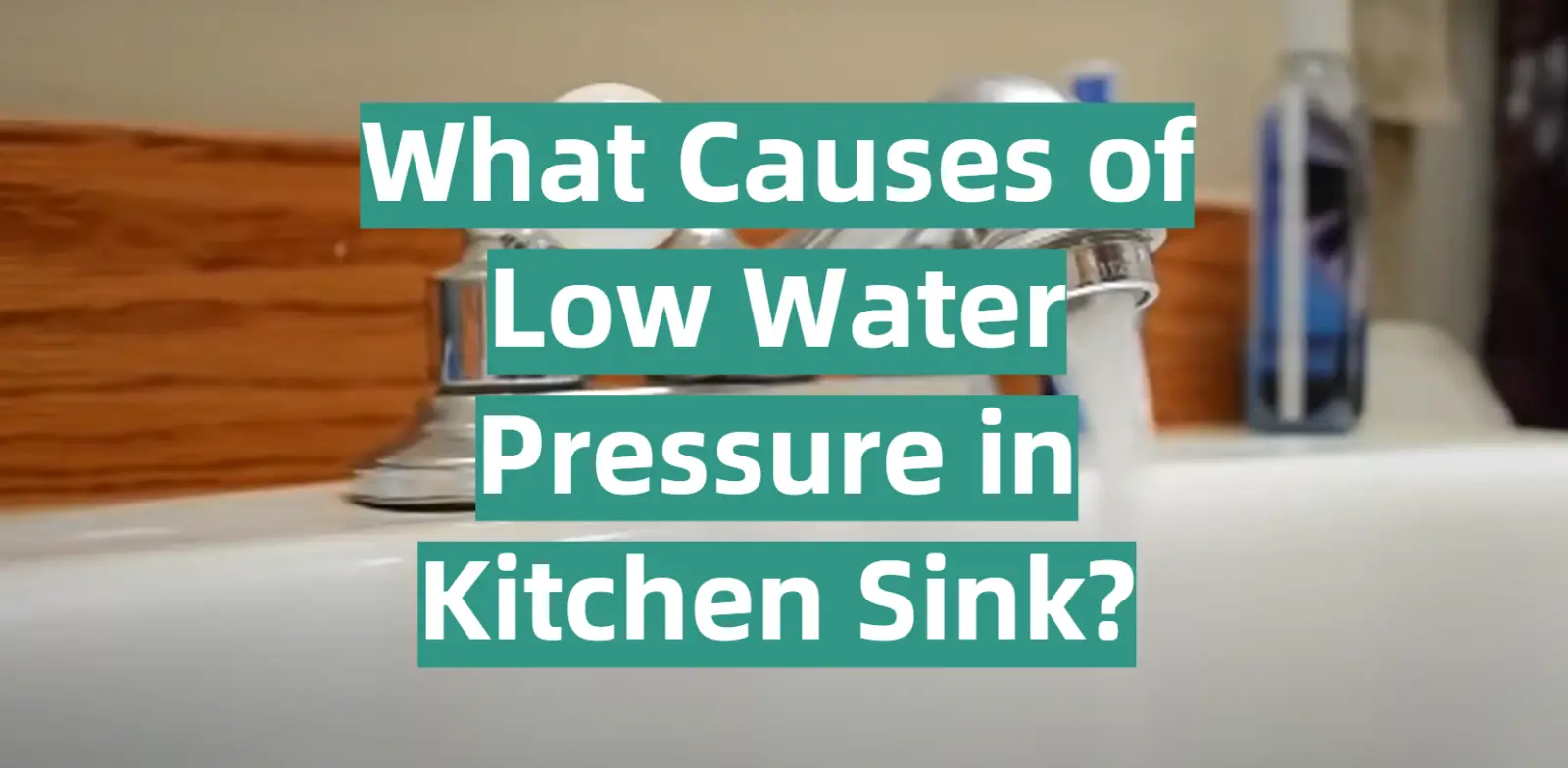




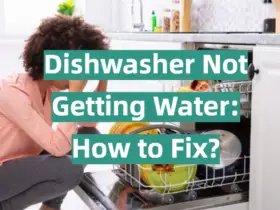
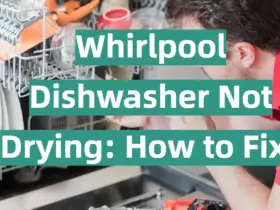
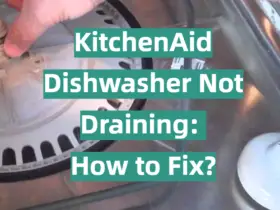
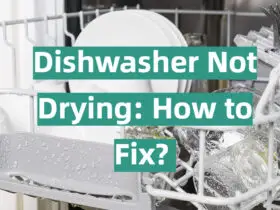
Leave a Reply